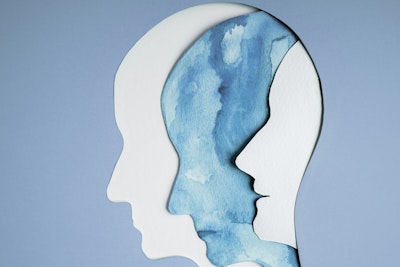
It’s Not Just the Hormones: Unpacking Teen Emotions
Setup
They’re up, they’re down, they’re up again — at least that’s what it looks like from the outside. But maybe the myths we perpetuate about the adolescent emotional roller coaster represent a cultural habit more than reality. Is understanding how humans experience feelings over the course of a lifetime the key to understanding teens? Join us as we explore how parents, coaches, teachers, and other adults can help teens communicate and navigate the intensity of their feelings. Leading experts on girls, boys, and the neuroscience of the adolescent brain shed light on this perplexing — and exciting — decade of development.
From sweet kid to prickly preteen
There’s often a classic moment in parenthood when parents wonder what ever happened to their sweet little kid — when did affection turn into attitude? The psychology and neuroscience behind these shifts in behavior can help parents better understand the rapidly-changing emotions of their teenage children. “From the transition from childhood into adolescence, there tends to be a reduction in daily positive emotion,” says Leah Somerville, a Harvard psychology professor. “Adolescents’ positive and negative emotional experience tend to have higher highs, lower lows, and bigger jumps in a given day.”
Big IdeaPart of what we’re dealing with clinically are bright young teenagers who remember when they didn’t feel this dis-regulated, and remember that it didn’t used to be that they’d be in a puddle on the kitchen floor over not finding the jeans they were looking for.Lisa Damour
The amount of negative emotion that adolescents experience is actually not that different from what adults experience, adds Somerville. However, “one of the key challenges in adolescence is the search for one’s own identity and one’s own passion,” she says.
Girls versus boys, how different are they?
There are plenty of misconceptions about what distinguishes girls and boys in their developmental years. Sure, there are some basic biological differences between male and female brains, but the main differences we see in adolescent development are due to social and cultural forces, the panelists agree. For example, when teens are distressed, girls are more likely to discuss, and boys are more likely to distract, says Lisa Damour, a clinical psychologist. Watch Michael Reichert, psychologist and founding director of the Center for the Study of Boys’ and Girls’ Lives, discuss the implications of gender socialization on boys’ emotional literacy:
Did You Know?
Parents should be wary of how their conscious or unconscious gender stereotypes are forced on their children. “Stereotypes and expectations can turn into a self-fulfilling prophecy for the way individuals ultimately act and accept their own emotions,” points out Leah Somerville. Instead, adolescents should be given the freedom and trust to explore their own identities and emotions without the adults in their lives telling them, “don’t think that” or “don’t feel that,” argues Lori Gottlieb, a psychotherapist and bestselling author.
The danger of "normal"
We’re often quick to ascribe teenagers the problems we think they’re having. But in truth, “a lot of the mood disorders that we see in adults present very differently in kids,” explains Lori Gottlieb. To have effective conversations with teens about our concerns for their safety and well-being, Gottlieb advises we can’t start with the belief that there is one “normal” way to be an adolescent. When we assume that certain behaviors are simply part of being a teenager, we can miss out on signs of something deeper going on, like depression.
Big IdeaDepression in teenagers often takes the form of very chronic irritability. It’s like living with a porcupine.Lisa Damour
What’s more, “we don’t trust them to reveal themselves and discover who they are, and the truth of what they want from their lives, by working it out — we react,” says Michael Reichert. What does he suggest as a solution? Learn how to listen deeply, in a way that doesn’t interrupt teens’ ability to figure out for themselves how they are feeling and how to articulate it.
What can parents do better?
The easiest thing parents can do to help their kids through the tumultuous years of adolescence? Support and normalize their experiences, says Lisa Damour, because teenagers feel so strange in the midst of it. Watch as Damour and Michael Reichert give advice for parents who are struggling to have conversations with their kids around topics that are unfamiliar and, sometimes, extremely uncomfortable.
Learn More
Additional Information
Resources
Maybe You Should Talk to Someone
Under Pressure: Confronting the Epidemic of Stress and Anxiety in Girls
How to Raise a Boy: The Power of Connection to Build Good Men
You’re an Adult. Your Brain, Not So Much
Explore More
Society

As we wrap-up another year of elevating big ideas at Aspen Ideas: Health, we're excited to share the 15 most-watched sessions from the event. These conversations with inspirin...


Young people in America are struggling. The causes are varied and may not be entirely clear, but the results are unfortunately unmistakable. Many of our youth feel lonely, iso...

In America, millions of people struggle with mental health including depression, anxiety, and more — all further exacerbated by living through a pandemic. The National Allianc...

Our attitudes, habits, pleasures, and responsibilities shift across the generations, influencing the health challenges we face and how we respond to them. Expectations about h...

Friends, partners, children, families, coworkers — these connections profoundly shape our lives, and even in the best of times, navigating them takes real work. It also means...

New York Times columnist and bestselling author David Brooks is known for bringing his thoughtful reflections on politics and culture, but at this year’s Aspen Ideas Festival,...

Jump in by watching our 15 most popular talks of all time. From black holes to jazz and civil rights to psychology hacks, we've collected the talks that remain audience favori...

Finding the national and global headlines understandably bleak lately? Whether you need mental distraction or stimulation, engross yourself in compelling topics and get a gli...

The United States spends $4.3 trillion—almost one fifth of the nation’s GDP—on health care. As the scale of the medical enterprise expands, venture capitalists are pursuing th...

Today's kids are coming of age against a backdrop of political, social, technological and economic upheaval. While these circumstances are shaping a precocious generation that...


Hope seems like a simple concept, but the feeling can be difficult to hold onto. And when times are difficult and chaos swirls around us, it’s more important than ever. How do...

Advocates, healthcare providers, legislators, researchers, and venture capitalists are bringing the unique health needs of women to light – from vigorous policy debates on iss...

From the debate over reproductive rights to the epidemic of gun violence to the youth mental health crisis, this year's Aspen Ideas: Health sessions tackled many of today's mo...

The recognition that all things are connected is at once a scientific principle and a philosophical touchstone. Humans, animals, and the environment are intertwined in complex...

Ethical dilemmas, stakeholder pressure, building trust — leading organizations requires wisdom and stamina from the top. Who wouldn’t want some advice?

What makes us happy — really? How can we raise resilient and empathetic children? What does it mean to be truly connected in our increasingly digital world? Can we re-instill...

Our need for human connection is profound and deep. Yet, today, one in two adults are living with measurable levels of loneliness – and the numbers are even higher among young...


Conflict and suffering can bring out the worst in people, but it can also bring out the best. This is one of the lessons New York Times columnist Nicholas Kristof has learned...


The federal right to abortions in the United States has been overturned, access to contraception and IVF services are threatened in many states, and the gender wage gap persis...

Henry Louis Gates Jr. — one of America’s leading public intellectuals and director of the Hutchins Center for African and African American Research at Harvard — explains the i...














